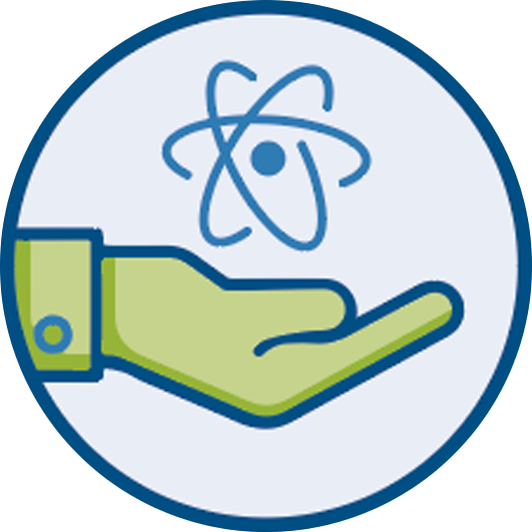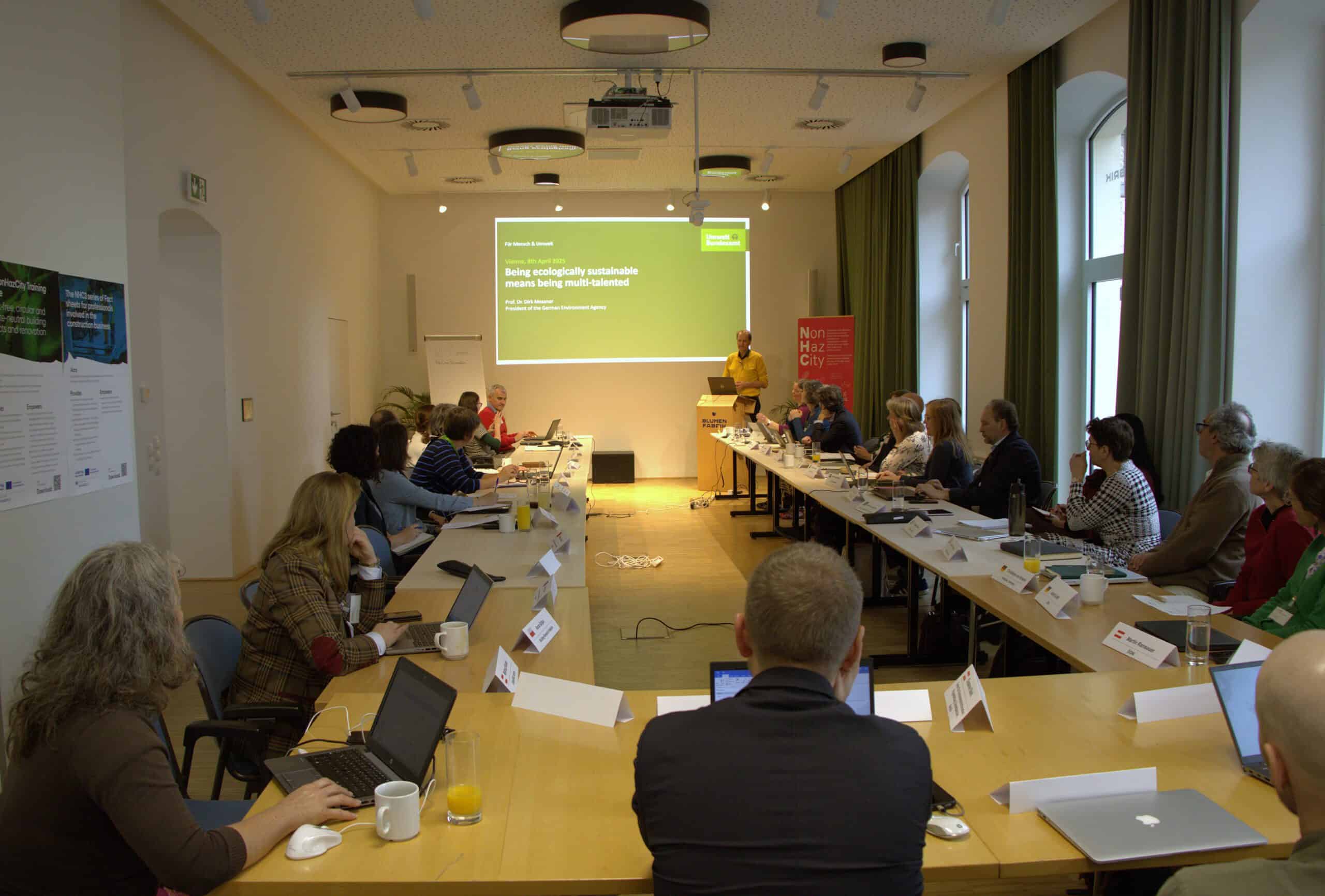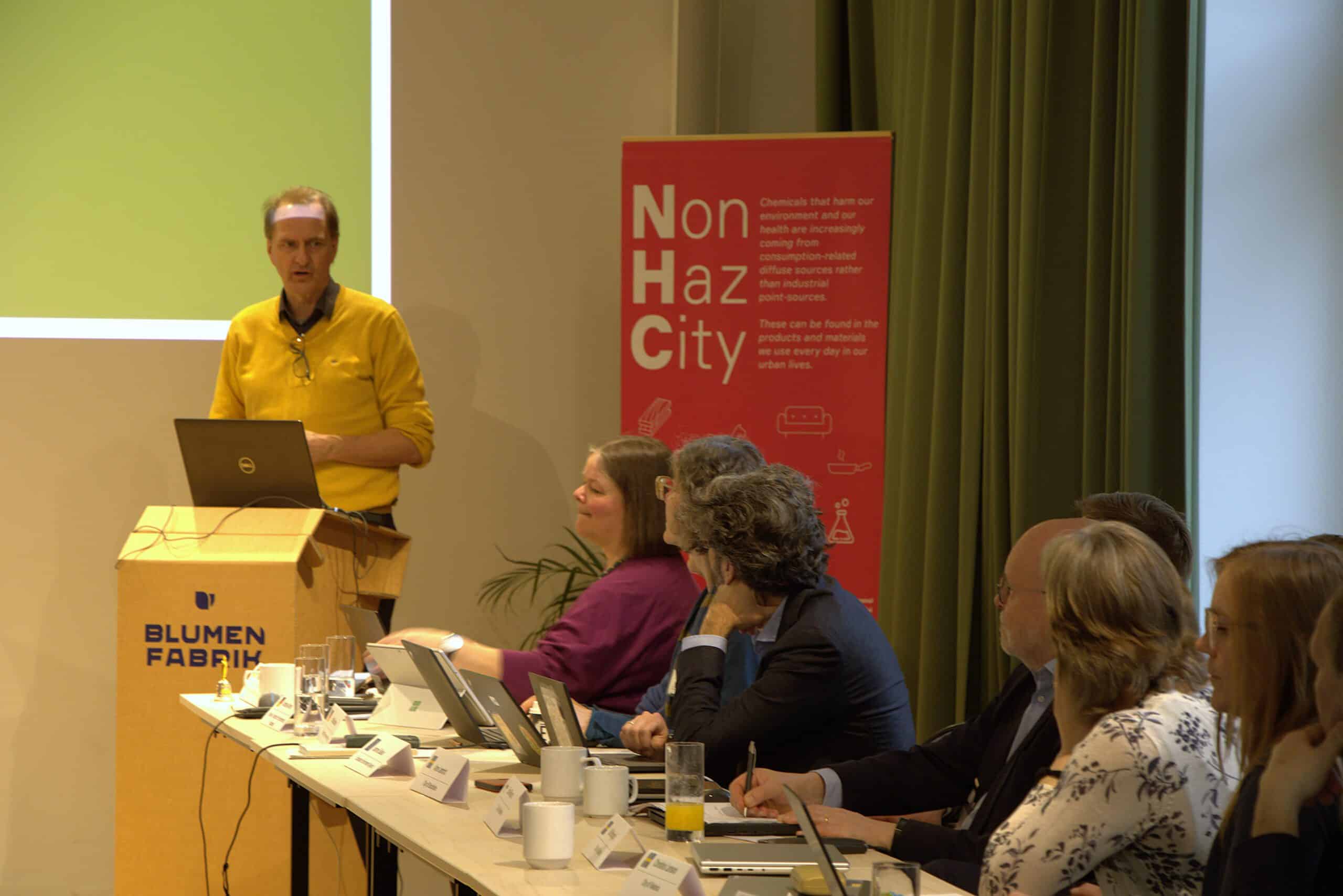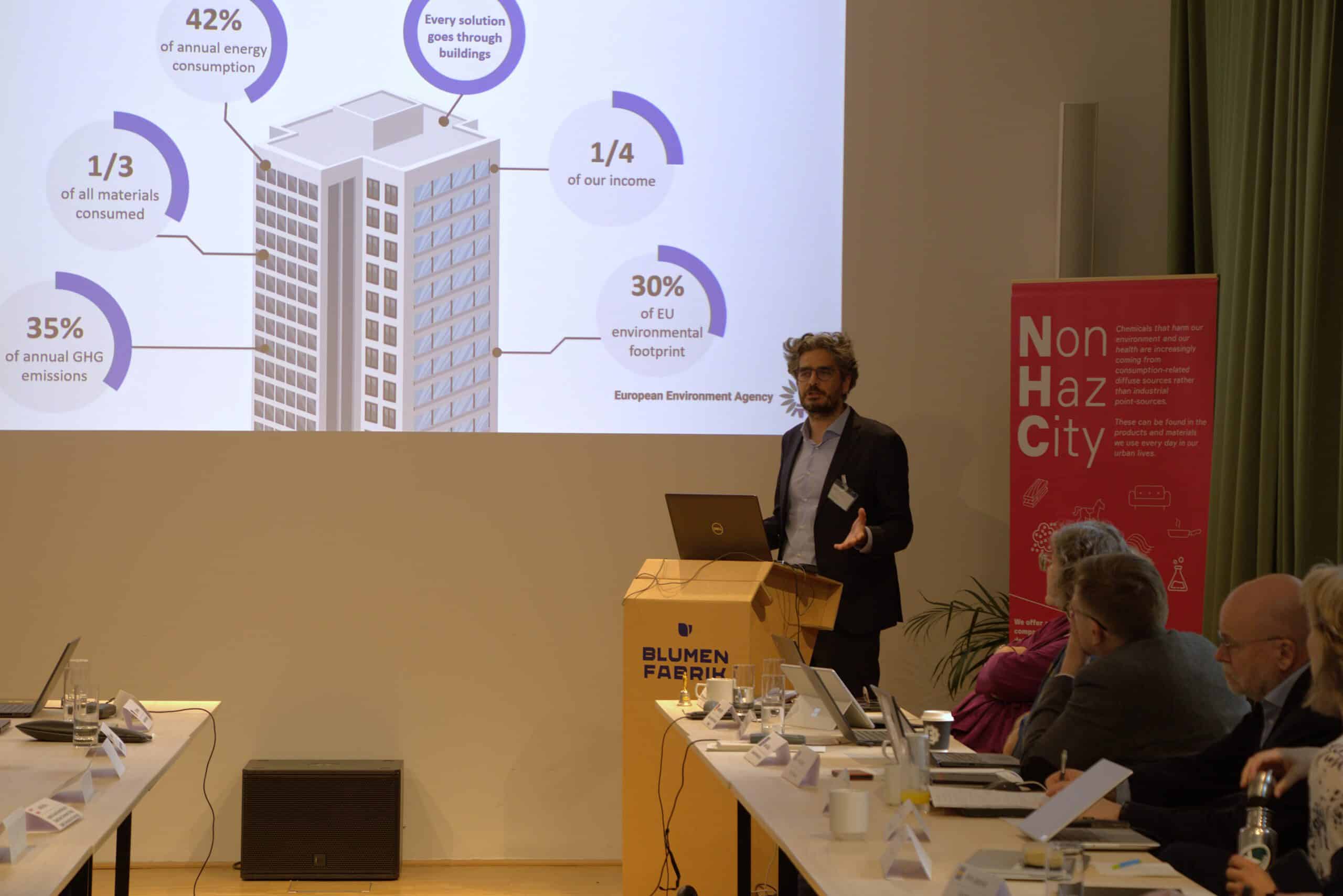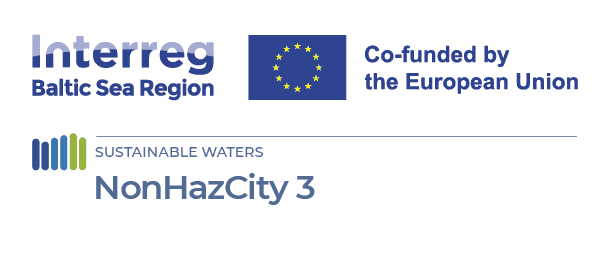
Outcomes of the NonHazCity3 Policy Implementation Dialogue Workshop in Vienna
15 April 2025
Purpose of the Workshop:
To facilitate an open dialogue between stakeholders on advancing the implementation of non-toxic environment goals in EU, national and local policies, with a focus on hazardous substances in buildings, procurement, and circularity.
Key Outcomes & Highlights
- Stakeholder Engagement:
Over 40 participants, including national and local authorities, academia, NGOs, industry representatives and professionals actively contributed to the event and its four interactive dialogue sessions. - Identification of Gaps and Priorities:
Stakeholders discussed options for bridging regulatory gaps to achieve zero-pollution buildings - Main Discussion Areas:
- Chemical Transparency:
- Call for harmonised digital dissemination of chemical information for construction products (Digital Product Passport, Digital Building Logbook)
- Agreement on an EU-wide framework featuring confidential expert assessments of chemical content for construction products, as a basis for an EU traffic light label.
- Non-toxic Building Materials & Green Public Procurement (GPP):
- Call for mandatory minimum GPP criteria as a basis for non-toxic construction.
- Chemical options shall be integrated to procurement software.
- Ecolabels to be utilised as prominent tools by GPP.
- Circular Economy, Recycling & Reuse:
- Hazardous substances were identified as a major barrier that hinder reuse, recycling and end-of-life handling and break the circular model.
- Participants flagged conflicting objectives between re-use and recycling of construction material
- The need to strengthen the implementation of the SCIP* database (i.e. dissemination through the Digital Product Passport) via the use of AI tools.
- Knowledge Exchange & Capacity Building:
- Clear demand for ongoing training on chemicals legislation for procurers, building planners and other relevant construction stakeholders, as well as SMEs.
- Development of user-friendly procurement templates and guidance documentation
- Necessary knowledge to assess, regulate, and implement non-toxic construction practices
- Chemical Transparency:
- Notable Messages:
-
- Local authorities (municipalities) reflected (panel) on the potential benefits of the proposed solutions.
- Better chemicals traceability tools and mandatory information disclosure were highlighted as enablers for tox-free construction.
Key Messages
- Tox-free construction through GPP is possible today for big cities with a large purchasing power, when strict mandatory criteria are established.
- Participants highlighted a need for enhanced chemical transparency in value chains, capacity building for procurers and setting a higher level of ambition beyond the Substances of Very High Concern (SVHCs).
- There is a shared understanding that EU and local policy must work hand in hand to close current implementation gaps.
Vienna Policy Workshop summary
Workshop presentations are here:
Being ecologically sustainable means being multi-talented
NonHazCity 3 – Solutions for tox-free, circular and climate-neutral buildings
Occurrence of substances of concern in Baltic Sea Region buildings, construction materials and sites
Municipality needs for reducing substances of concern in construction
The ChemClimCircle approach to procurement
Policy Implementation Dialogue on Reducing Hazardous Substances in Construction
How to use Byggvarubedömningen construction material assessment tool at community level
Baubook database and tools for ecological building and renovaton
Safety in construction with regard to health – database for building authority
Policy Implementation Dialogue on Reducing Hazardous Substances in Construction
Framing Policy Recommendations for Tox-Free Construction
Stakeholder Questionnaire – Answers
Main policy options Finding common ground on solutions



